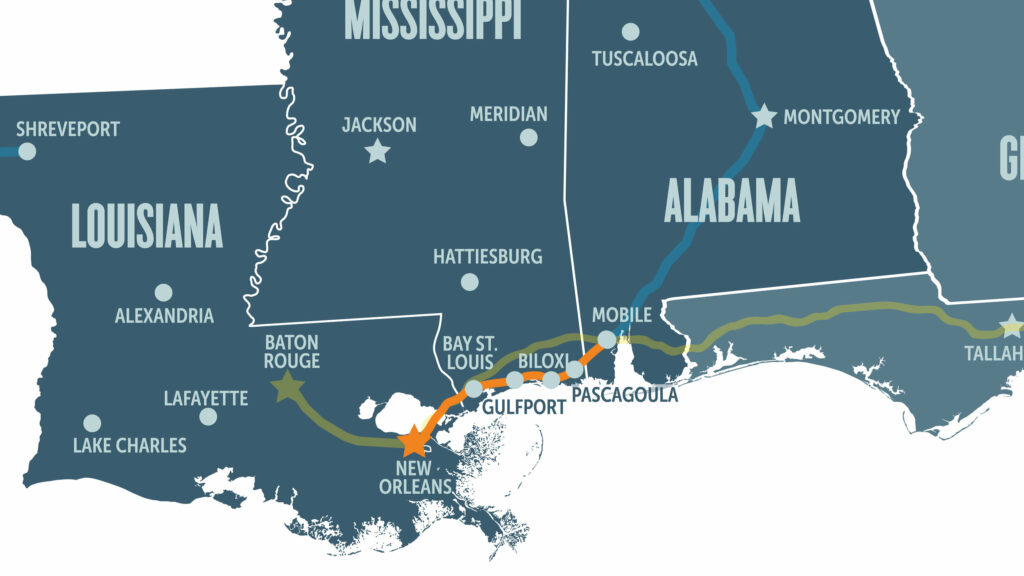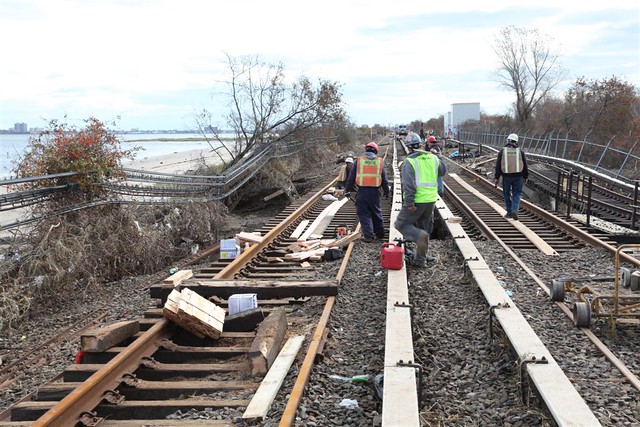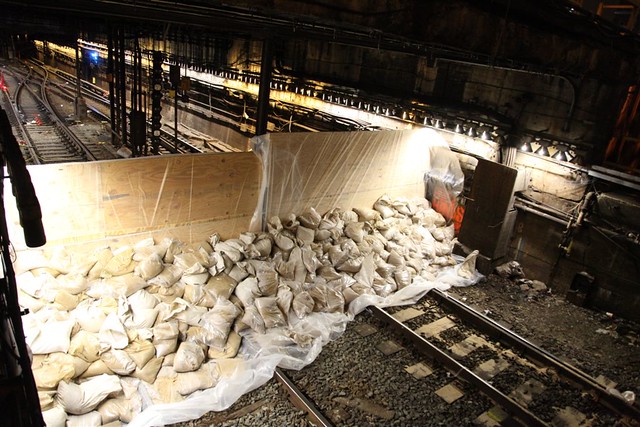
Sandy relief bill will provide billions for repairing and improving transportation systems
The Sandy relief bill on the cusp of final passage will provide billions for cleanup and more than $12 billion for transportation — including an unprecedented step toward making transportation networks around the northeast and NYC more resilient in the face of climate change, more frequent and unpredictable storms, and rising sea levels.

The MTA A Train bridge to the Rockaways was heavily damaged during Hurricane Sandy. This photo shows early repair work underway as of November 3, 2012. Photo: MTA New York City Transit / Leonard Wiggins
It’s not completely a done deal yet — the House and Senate passed slightly different bills — but the $50.66 billion Sandy relief bill was passed by the House this week more than two weeks after the promised vote by Speaker Boehner to New Jersey Governor Chris Christie (and others) at the end of 2012.
The Senate passed their version of the bill back in 2012. The bills are almost identical in their funding amounts, though there are some small programmatic differences in funding. Also, earlier this month, Congress approved and President Obama signed a measure providing $9.7 billion in additional funding for the federal flood insurance program, bringing the total expected Sandy spending up around $60 billion.
Part of the reason the House did not vote on this comprehensive package was due to pushback from House Republicans against approving such a large emergency spending package, and particularly because the package included funds for “future disaster mitigation,” i.e., acknowledging that climate change exists and is something worth preparing for. As a result, northeastern legislators from both parties were livid at the delay in approving disaster funding for their hard-hit region — actually a longer wait than for Katrina funding in 2005.
So what’s in the two bills for transportation?
The Senate package included over $12 billion for transportation. The bulk of that ($11 billion) is for the damaged transit systems that millions of daily commuters and riders depend on, to be distributed through the new Federal Transit Emergency Relief program (created by MAP-21). Close to $5.4 billion of this funding is directed to mitigation efforts to reduce the risk of damage from future disasters. As noted above, this unprecedented inclusion of mitigation funding represents a major shift in the federal dialogue about the real need to address and prepare for the impacts of climate change.
The Senate bill also included $336 million in mitigation relief to Amtrak and the Northeast Corridor for damages caused by the storm as well as advancing projects critical to improving resiliency in the case of future disasters. (According to our partners at the Tri-State Transportation Campaign, that money also helps NJ Transit, which operates commuter service on the same tracks.) There was also about $920 million to repair Sandy-related damage on our nation’s highways and bridges.
The House-passed package included relief for all of the above, but there are some important differences in the transportation funding distribution. Amtrak’s relief was cut by about 64% down to $118 million. Transit system relief is still close to $11 billion with close to $5.4 available for projects to alleviate future damage (there were some slight language changes and a small boost in funding). Highway disaster relief increased to a little over $2 billion.
Though there was opposition to the package from many House Republicans, the measure was pushed through with the support of the House Republicans from the region as well as House Democrats. Now, the Senate will likely take up and pass the House bill, or potentially attempt to amend it before final passage.

MTA New York City Transit preparations for Hurricane Sandy. Photo: MTA New York City Transit / Leonard Wiggins



